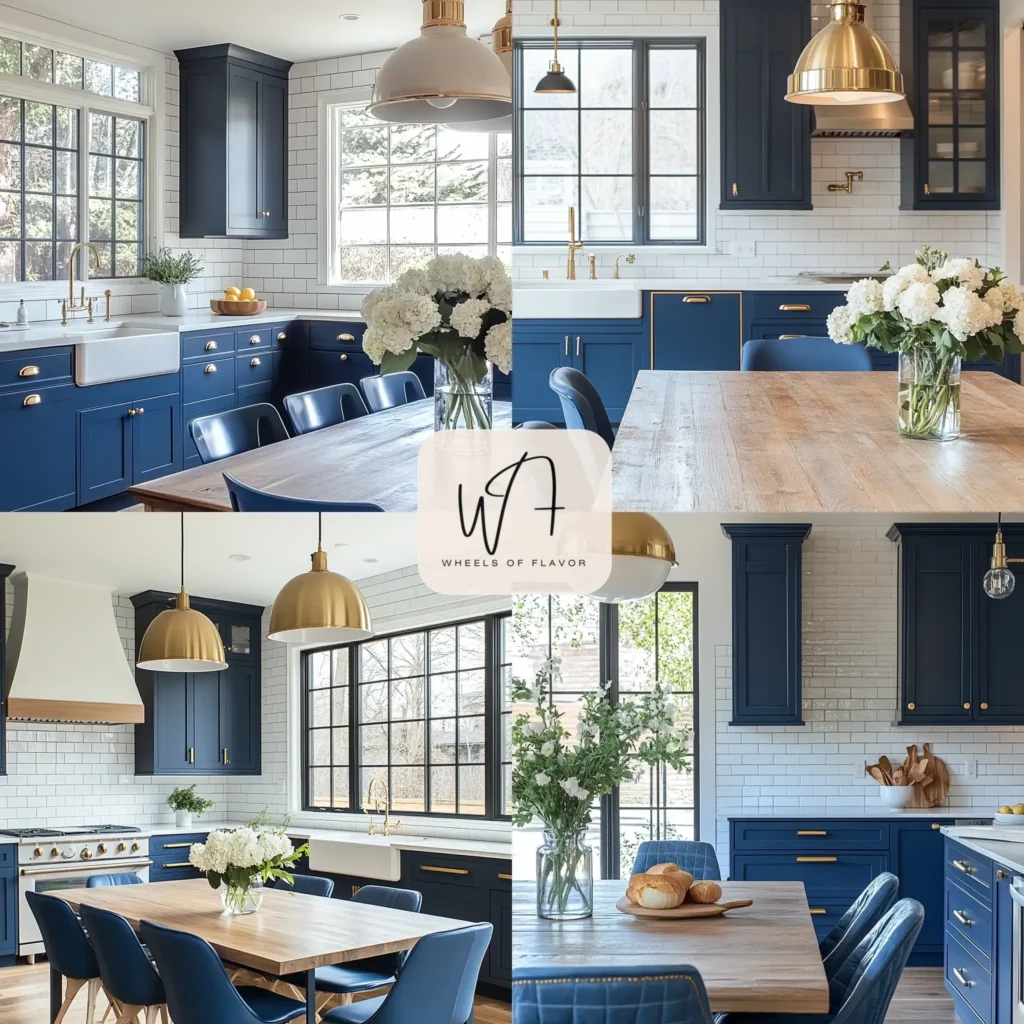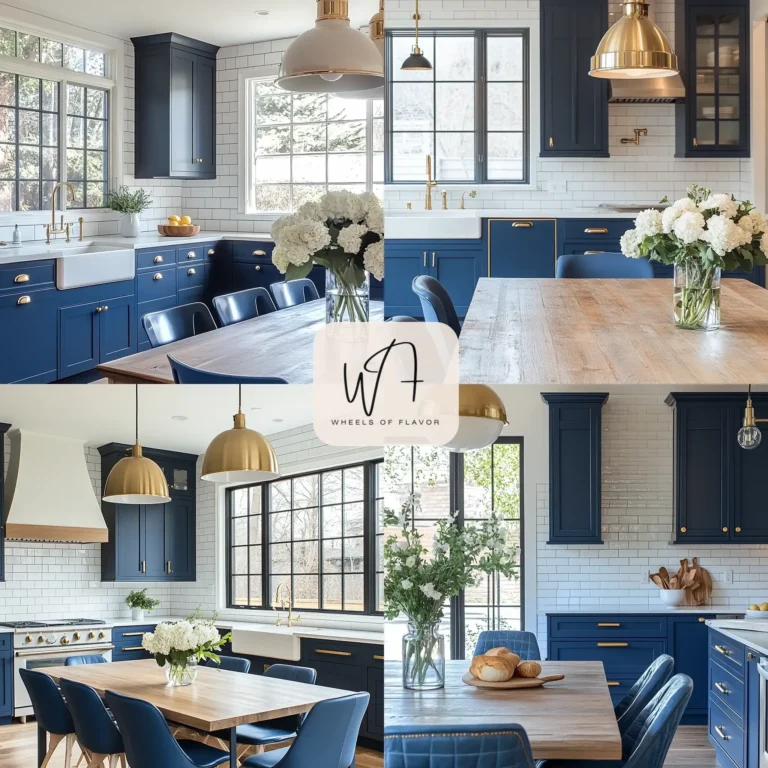Classic blue-white kitchens are timeless, blending elegance and functionality in a way that feels both fresh and nostalgic. This color palette, with its crisp whites and soothing blues, creates a welcoming space perfect for cooking, entertaining, and everyday living. In this article, we’ll explore why classic blue-white kitchens are a top choice for homeowners, how to design one, and tips to make your kitchen stand out. Whether you’re planning a full remodel or a simple refresh, these ideas will inspire you to create a kitchen that’s both stylish and practical.
Table of Contents
Why Choose a Classic Blue-White Kitchen?
Classic blue-white kitchens offer a versatile aesthetic that suits various design styles, from traditional to modern farmhouse. The combination of blue and white evokes a sense of calm and cleanliness, making your kitchen a serene place to start your day. Blue, often associated with tranquility, pairs beautifully with white’s brightness, creating a balanced and airy feel.
This color scheme is also highly adaptable. You can go bold with navy cabinets or keep it subtle with pale blue accents. White walls, countertops, or backsplashes provide a neutral backdrop, allowing you to experiment with textures and finishes. Plus, classic blue-white kitchens are timeless, ensuring your space won’t feel dated in a few years.
For more DIY inspiration, check out our DIY Budget-Friendly Decor section for creative ways to personalize your kitchen.
Key Elements of a Classic Blue-White Kitchen
To create a classic blue-white kitchen, focus on these essential elements:
1. Cabinetry
Cabinets are the backbone of any kitchen. For a classic look, opt for white shaker-style cabinets paired with blue accents. Navy or slate blue lower cabinets with white uppers create a striking contrast. If you prefer a softer vibe, try pastel blue cabinets with white hardware.
2. Backsplash
A white subway tile backsplash is a staple in classic blue-white kitchens. For a modern twist, consider blue mosaic tiles or patterned tiles with blue accents. These add personality without overwhelming the space.
3. Countertops
White quartz or marble countertops complement the blue-white palette beautifully. For a budget-friendly option, butcher block countertops add warmth and pair well with blue cabinets.
4. Hardware and Fixtures
Brass or matte black hardware adds a touch of sophistication. Swap out old faucets for sleek, modern designs in brushed nickel or gold to elevate the look.
5. Lighting
Pendant lights above the island or a chandelier can make a statement. Choose fixtures in white, blue, or metallic tones to tie the design together.
For more kitchen design tips, explore this insightful article from The Spruce, which offers expert advice on choosing color schemes for your home.

How to Design Your Classic Blue-White Kitchen
Designing a classic blue-white kitchen requires careful planning to balance aesthetics and functionality. Here’s a step-by-step guide:
- Set a Budget: Determine how much you’re willing to spend. Small updates like painting cabinets or changing hardware are cost-effective, while new countertops or appliances require a larger investment.
- Choose Your Blue: Decide on the shade of blue that suits your style. Navy is bold and dramatic, while light blue feels soft and inviting. Test paint samples to see how they look in your kitchen’s lighting.
- Incorporate White: Use white strategically to brighten the space. White walls, ceilings, or countertops reflect light, making the kitchen feel larger.
- Add Texture: Mix materials like wood, ceramic, and metal to add depth. A wooden island or ceramic vases can soften the look of blue and white.
- Personalize with Accessories: Rugs, curtains, or dishware in blue and white patterns tie the theme together. Fresh herbs or flowers add a pop of color and life.
For budget-friendly decorating ideas, visit our DIY Budget-Friendly Decor page for creative projects you can tackle at home.
Benefits of a Classic Blue-White Kitchen
A classic blue-white kitchen isn’t just beautiful—it’s practical too. Here are some key benefits:
- Timeless Appeal: This color scheme never goes out of style, ensuring your kitchen remains relevant for years.
- Versatility: Blue and white work with various design styles, from coastal to industrial.
- Easy to Maintain: White surfaces are easy to clean, and blue hides minor stains better than lighter colors.
- Increases Home Value: A well-designed kitchen can boost your home’s resale value, and classic blue-white kitchens appeal to a wide range of buyers.
Tips for Maintaining Your Classic Blue-White Kitchen
To keep your classic blue-white kitchen looking pristine, follow these tips:
- Clean Regularly: Wipe down countertops and cabinets to prevent stains or grease buildup.
- Use Protective Coatings: Apply sealants to countertops and grout to protect against spills.
- Update Seasonally: Swap out accessories like towels or rugs to refresh the look without major changes.
- Check Lighting: Ensure your lighting highlights the blue and white tones. Replace dim bulbs to maintain a bright atmosphere.
FAQs About Classic Blue-White Kitchens
Q: Are classic blue-white kitchens suitable for small spaces?
A: Yes! The white elements make small kitchens feel larger, while blue adds depth without overwhelming the space. Use light blue shades for a more open feel.
Q: How can I add warmth to a classic blue-white kitchen?
A: Incorporate wooden elements like a butcher block countertop or open shelves. Warm metals like brass or gold also add coziness.
Q: What flooring works best with a classic blue-white kitchen?
A: Hardwood floors in medium or light tones complement the palette. For a budget-friendly option, try porcelain tiles in white or gray.
Q: Can I mix other colors with a classic blue-white kitchen?
A: Absolutely. Neutral tones like gray or beige work well, as do pops of color like yellow or green in accessories.
For more home decor inspiration, check out our DIY Budget-Friendly Decor section to find affordable ways to enhance your classic blue-white kitchen.


